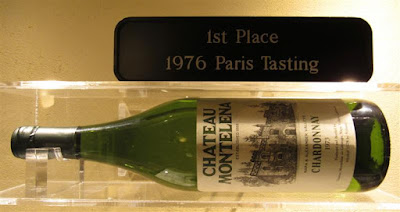History is Found Amongst the Vines...
Jan
31
One of the most surprising finds, for me, was the amount of incredible history that exists in Napa Valley.
Its final chapter began with the renaissance of Chateau Montelena Winery and the Estate vineyard in the early 1970s. Under the leadership of Jim Barrett, the vineyard was cleared and replanted, and the Chateau outfitted with modern winemaking equipment. He assembled a team to oversee the vineyard and winemaking, then grew and contracted for the highest-quality grapes in the Napa Valley. In 1972 wines were made for the first time. Decades later, this celebrated family-owned winery continues to thrive with Jim's son Bo Barrett at the helm.
For those who are oenophiles, this winery was the subject of the movie, Bottle Shock. The 2008 American comedy-drama film is based on the 1976 wine competition termed the "Judgment of Paris", when Chateau Montelena's Chardonnay defeated French wine in a blind taste test. The competition put Napa on the map.
Over the years and for various reasons, the Chateau changed hands. Prior to its final chapter, the Franks bought it as a retirement place and created Jade Lake as a reminder of their home in China (1958). This serene place is considered one of Napa Valley's most beautiful sanctuaries, home to a variety of fish and wildlife, and surrounded by weeping willows and native fauna.
We found ourselves in the Bothe-Napa Valley State Park exploring the Pioneer Cemetery, resting-place of some of the original settlers. The cemetery is an interesting place to visit and is currently under restoration to return it to its original, mid-1800’s condition.
It exists on the grounds of White Church, named after Asa White, a Methodist-Episcopal saddlebag preacher, better known in history as a circuit rider or itinerant clergy (arriving in 1850).
Son of Reason Tucker, Stephen was one of the pioneers of the State, having crossed the plains in the Summer of 1840, in company with four of his other brothers- so interesting!
Our final history lesson of the day involved a to visit California Historical Landmark NO. 814 BERINGER BROTHERS WINERY.
Built by Frederick and Jacob Beringer, natives of Germany, this winery has the unique distinction of never having ceased operations since its founding in 1876. Here, in the European tradition, were dug underground wine tunnels hundreds of feet in length, thus demanding a future explore.
This amazing home, completed in 1884, was Frederick Beringer's former residence and is now the centerpiece of the expansive Beringer property. Exhibiting the fine, detailed craftsmanship of the period, the Rhine House has beautiful exterior stonework, stained-glass windows and interior wood paneling. Built at a cost of about $28,000 (with the 40 panels of stained glass accounting for $6,000) the Rhine House is a classic example of ornate Victorian architecture with its many gables, turrets and ornaments. And the perfect stop in our history tour for today.










1 comments:
Our last day was one to remember. Cyndy
Post a Comment